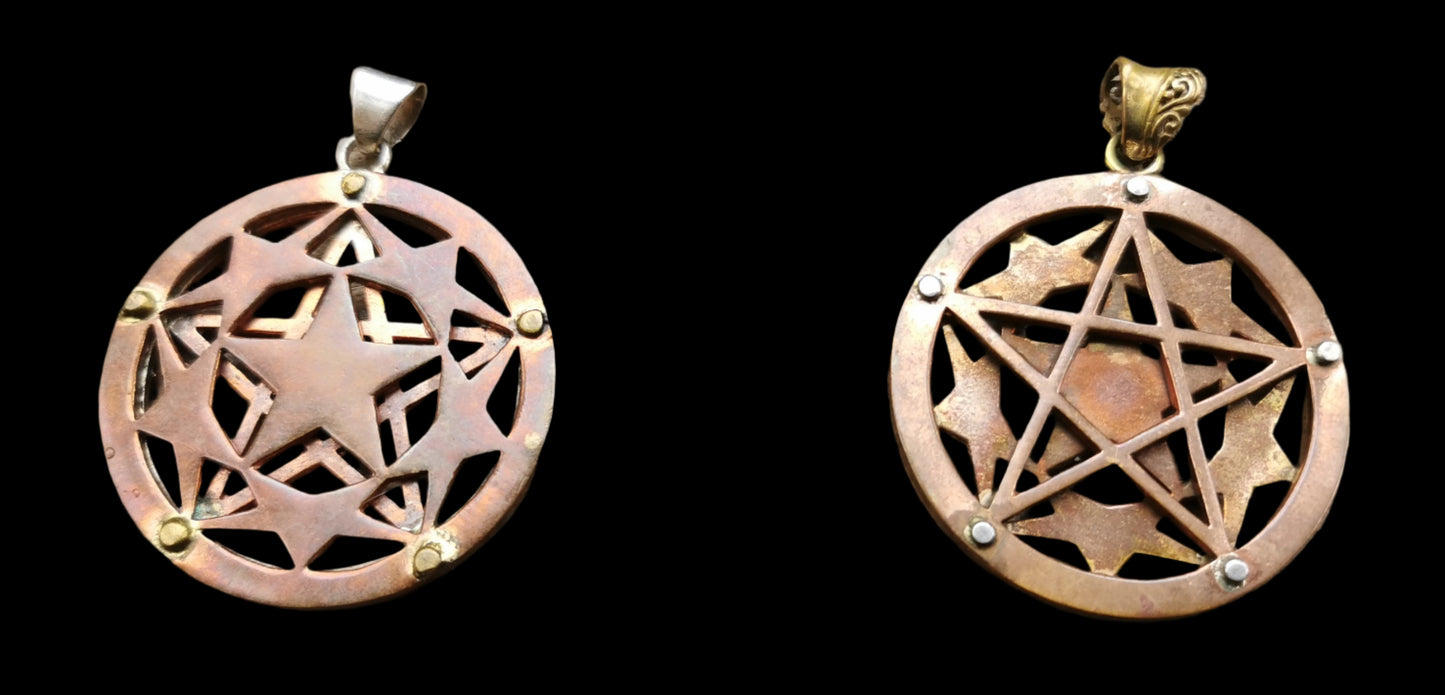Portal Glastonbury
Ref.SM0082 - Penta Fractal
Ref.SM0082 - Penta Fractal
Couldn't load pickup availability
Ref.SM0082 - Penta Fractal [pentagram/star]
The pentagram, a five-pointed star enclosed within a circle or standing alone, carries rich symbolic significance rooted in its geometric harmony and universal patterns, independent of any deity or divine framework. Its meanings span mathematics, nature, philosophy, and human experience, reflecting balance, interconnectedness, and the essence of life.
At its core, the pentagram symbolizes balance and proportion. Its five points, evenly spaced, form a shape tied to the golden ratio, a mathematical constant found in nature’s spirals, flowers, and even human anatomy. This ratio (approximately 1.618) creates a sense of aesthetic and structural harmony, making the pentagram a visual emblem of equilibrium. It suggests a state where all elements—physical, mental, emotional—coexist in unity, reflecting an ideal of inner and outer balance.
The five points often represent the elements of existence: earth, air, fire, water, and spirit (or consciousness). Without invoking divinity, this mapping underscores interconnectedness, showing how these forces interact to sustain life. Earth grounds, air flows, fire transforms, water adapts, and spirit integrates, with the pentagram as a symbol of their cyclical synergy. It evokes the idea that life thrives through the interplay of diverse yet complementary forces.
The pentagram also signifies protection and wholeness. When enclosed in a circle, it becomes a continuous loop, suggesting containment and completeness. Historically, its unbroken line was thought to ward off harm, not through supernatural means but as a geometric assertion of unity and resilience. The circle binds the star’s points, symbolizing a closed system where energy circulates without loss, akin to natural cycles like seasons or ecosystems.
In human terms, the pentagram mirrors the body and mind. Its five points align with the human form—head, arms, legs—making it a symbol of individuality and potential. It reflects the idea of a person as a microcosm, embodying the same patterns seen in broader systems, like starfish or pentagonal flowers. This self-similarity suggests that personal growth mirrors universal principles, linking self-awareness to the world’s rhythms.
The star’s dynamic shape also implies movement and aspiration. Each point reaches outward, yet all connect inward, symbolizing the tension between exploration and rootedness. It captures the human drive to expand—through creativity, knowledge, or connection—while staying anchored in core truths. This duality makes it an emblem of progress balanced by stability.
In philosophical contexts, the pentagram represents complexity within simplicity. A single line, drawn continuously, forms a star with infinite geometric potential (e.g., smaller pentagrams emerge within it). This reflects how simple principles can yield intricate outcomes, paralleling life’s ability to unfold richly from basic foundations.
Whether upright or inverted, the pentagram’s meaning shifts with perspective. Upright, it emphasizes ascent and harmony; inverted, it can suggest introspection or grounding, focusing on inner depths. Neither orientation inherently carries a moral charge—both reflect natural polarities, like day and night, without requiring external judgment.
Ultimately, the pentagram symbolizes the elegance of interconnected systems—human, natural, and mathematical. It stands for balance, protection, aspiration, and the unity of life’s elements, inviting reflection on how patterns within us echo the world’s vast design.
Type: double sided medallion
Material: copper/brass
Size: 40mm/1.57in approx.




